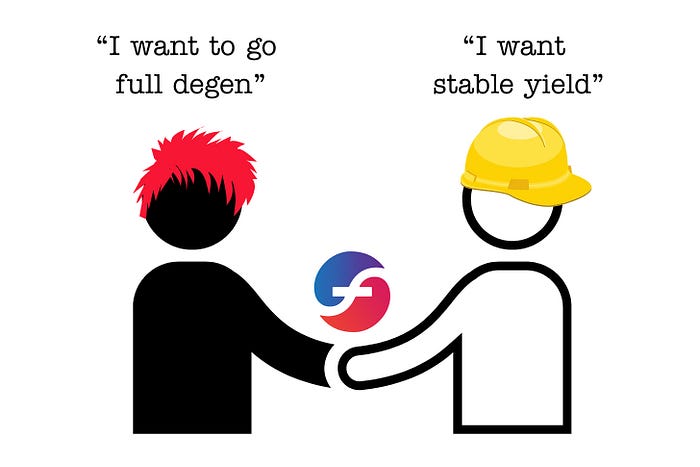Why f(x) Protocol Is The Most Interesting DeFi Protocol You Haven’t Heard Of
A Deep Dive into f(x) Protocol and FXN

I’m writing this because I’ve spent my last two weeks eating carrots at the bottom of this rabbit hole. I told @DefiBetaTesta a few weeks ago to tell me if he found anything he thought was game-changing. Fast forward a bit and I get this…

So here we now are today and both BetaTesta and I have emerged, bleary eyed and generally a bit shaken, from our weeks in the rabbit hole.
An Intro To f(x) Protocol
Where should we begin? It’s a bit hard to decide how to frame f(x) Protocol. Is it a stable coin project? Or maybe we should focus more on the functionality it enables within the ETH ecosystem?
Let’s first talk about what it is and how it works. Then we’ll explore the implications.
Very briefly:
- f(x) Protocol potentially unlocks a game-changing stable coin alternative f(x)USD and we need to understand all of the stables that came before to properly compare.
- f(x) Protocol offers a set of powerful possibilities within the ETH ecosystem, including:
- A way to gain native-ETH yield without exposing yourself to the volatility — like a crypto savings account if you will.
- An easy to use way to get exposure to leveraged ETH
- They have $45 million in TLV right now.
Before we go on, I highly recommend you read this article first, since it’s really important to have a strong understanding of the ecosystem so that you can understand why what f(x) Protocol is doing is unique:
f(x) Protocol ELI5
f(x) Protocol’s uses collateral like many other DeFi protocols. Right now, f(x) Protocol uses stETH as their collateral — staked ETH — but they will allow other LSTs in the future (LST stands for Liquid Staking Token which, essentially, is the token that represents a deposit in an ETH staking protocol like Rocket Pool or Lido).
The advantage of stETH is that it allows the protocol to capture the native yield of ETH. As you’ll see, they put it to good use.
Isn’t stETH More Risky?
You might say, “but isn’t it more risky to use stETH, since now we have to also trust the Lido Protocol?” This is fair and there is additional protocol risk involved. However, I’ll make the same point I heard the f(x) Protocol team make in an interview. At this point, there is so much ETH deposited in Lido, that a failure of the Lido protocol may very well result in a failure of the entire ETH ecosystem. In other words, it’s not really that by not using stETH, f(x) Protocol could protect themselves from Lido. They would just be forfeiting the native yield.
…
To read the rest of this post, you can find it for free here:
